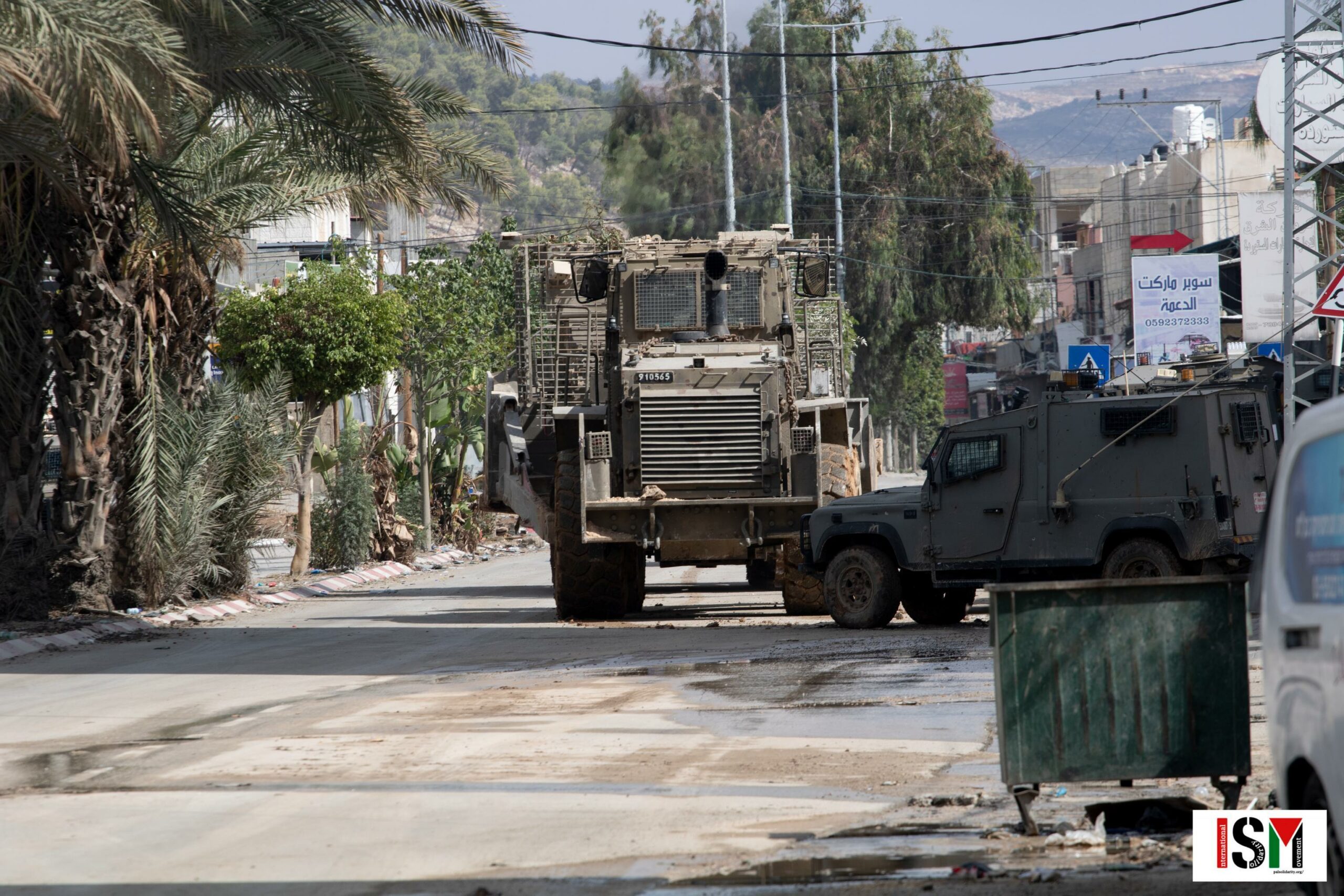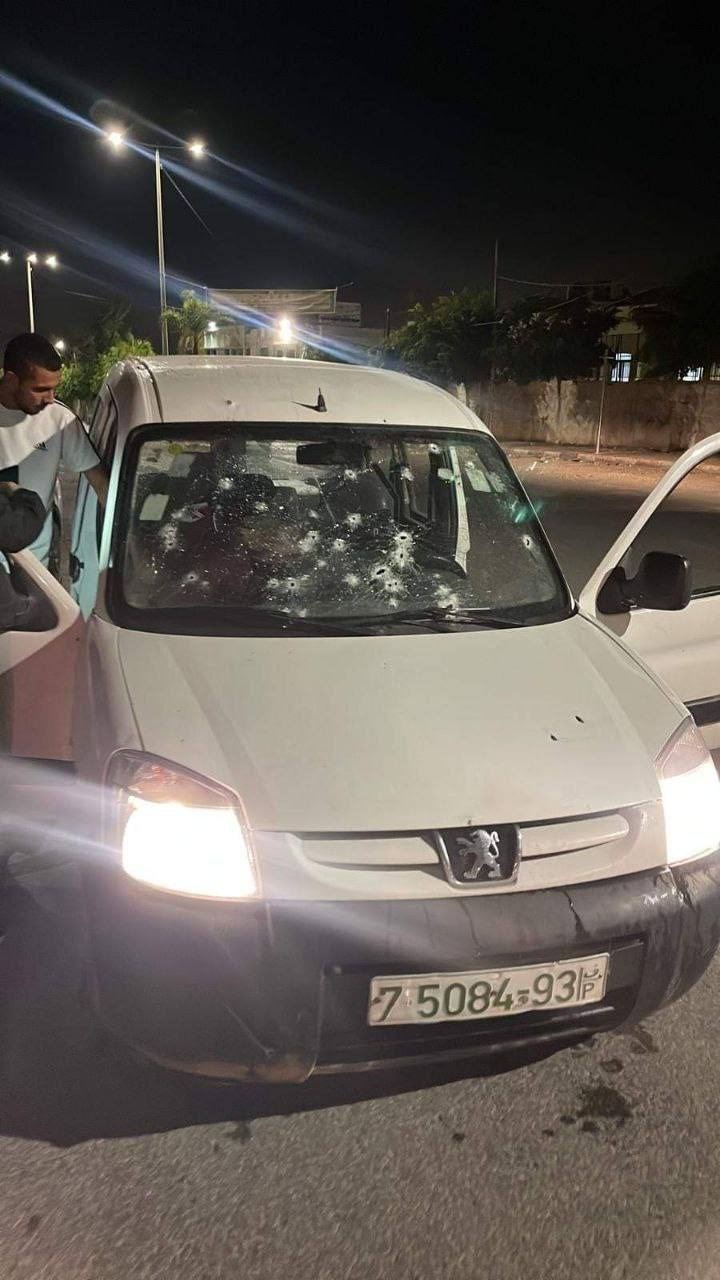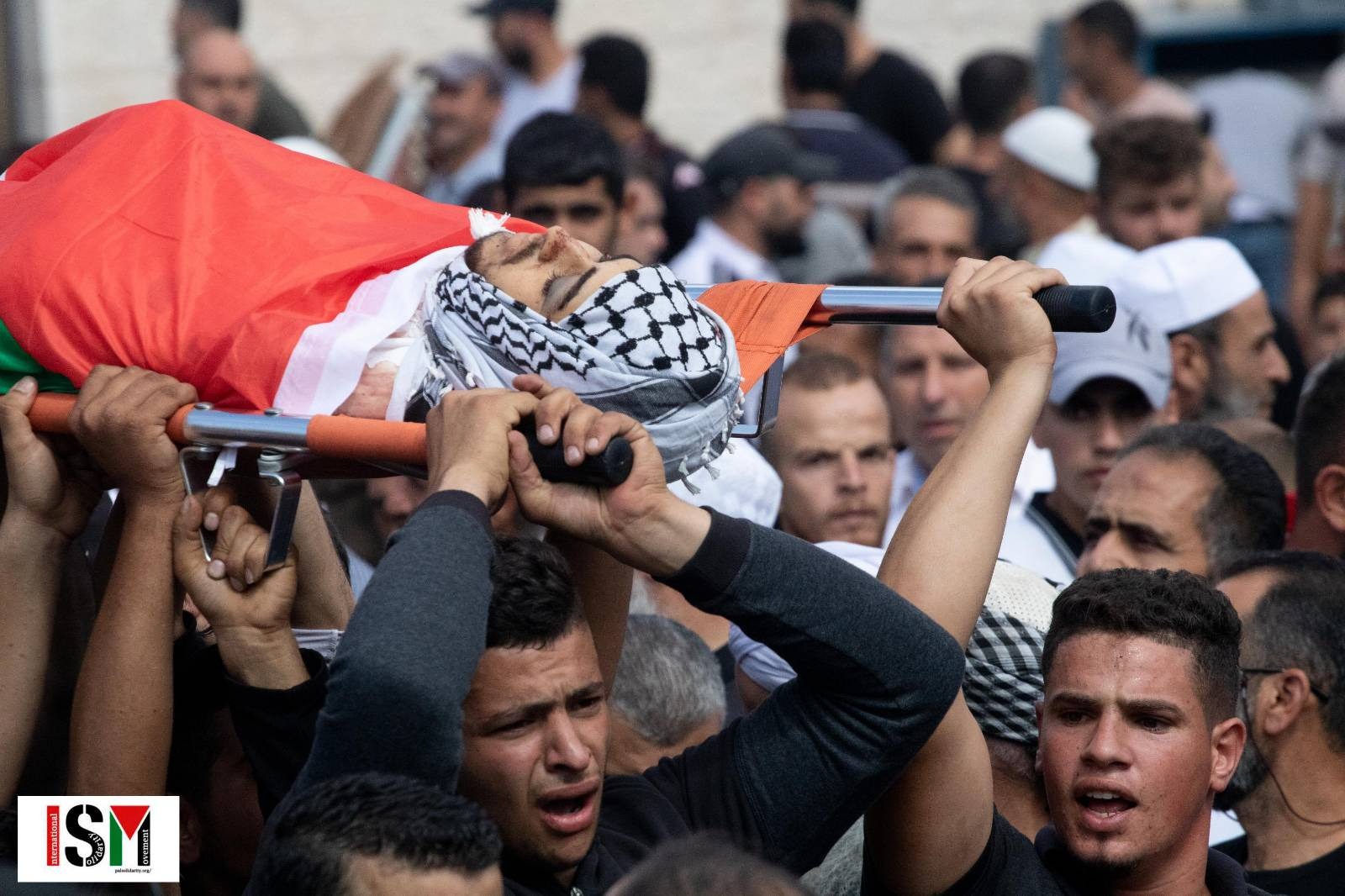Category: Photo Story
-
A new massacre in Nour Shams camp, Tulkarm
19 October 2023 | International Solidarity Movement | Tulkarm By Diana Khwaelid The Israeli occupation forces launched a major military assault on the city of Tulkarm, especially on the Nur Shams refugee camp. A curfew was imposed throughout the city for at least 30 continuous hours, and Israeli snipers were deployed in more locations…
-
Israeli snipers target civilians, kill father of 3-year-old in Tulkarm
13 October, 2023 | International Solidarity Movement | Tulkarm By Diana Khwaelid On the evening of Friday, October 13th, 2023, Israeli snipers opened direct live fire on a white civilian car while it was passing near the Sanaoz military checkpoint, in Tulkarm city. Ahmed Abed, who was one of the two passengers in the…
-
6 Palestinians killed by settlers with the protection of the Occupying forces in Qusra village
By Diana Khwaelid Qasra village – 12/10/2023 On the evening of Wednesday 11-10-2023, a group of extremist settlers stormed the village of Qusra, north of Nablus, and attacked Palestinian citizens. The settlers were working with the protection of the Israeli occupation army. Palestinian youth from the village came out to try and defend from the…



